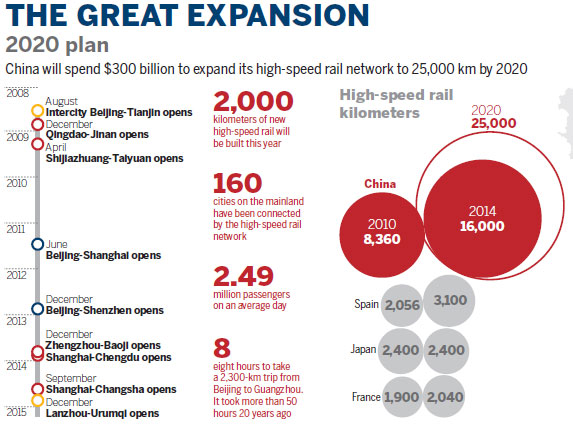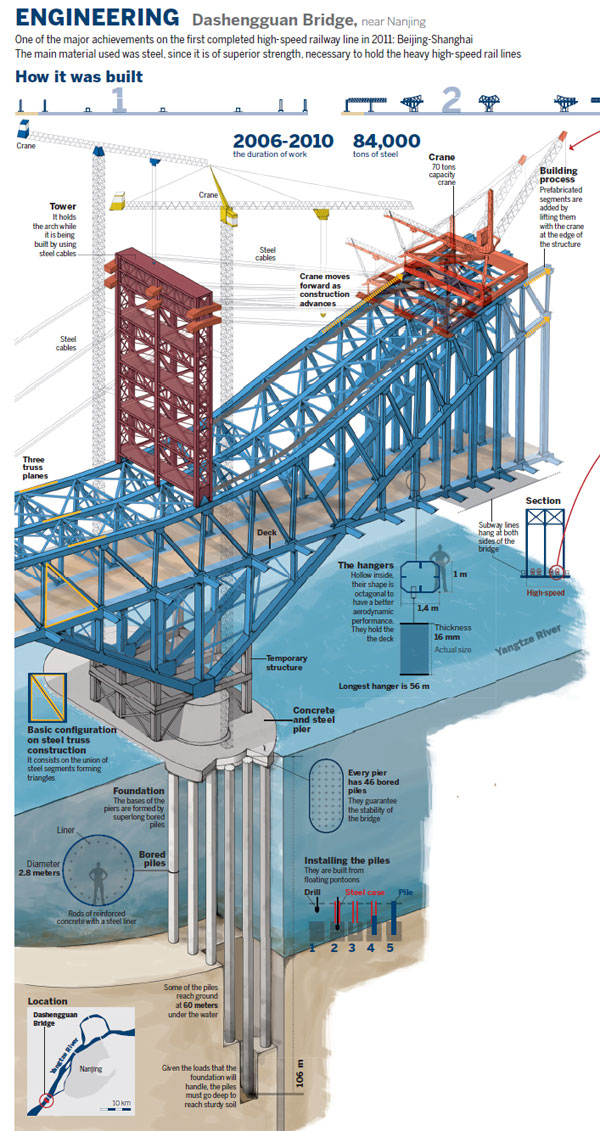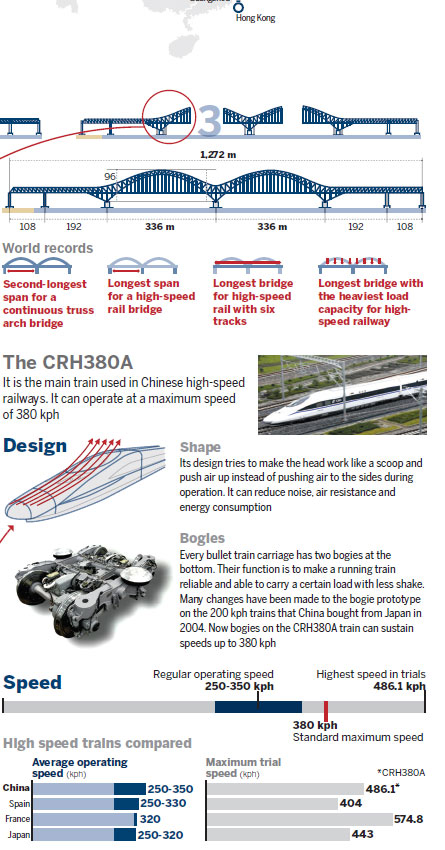High-speed rail ride thrills Canadians
Updated: 2015-04-30 23:19
By MAYA LIU in Vancouver(China Daily Canada)
Young Canadian filmmakers Antony Packer (left) and Collin Kortschak take a high-speed train from Guangzhou to Shenzhen. [PROVIDED TO CHINA DAILY]
A group of young people from Canada recently took an unforgettable train ride through China's Guangdong Province.
The members of the "Golden Panda" North American Filmmaker Cultural Immersion Trip traveled on China's high-speed rail (HSR), the world's longest rail line with the fastest train in commercial service, from Guangzhou to Shenzhen at speeds of 300 km/h and higher.
They were surprised upon learning that it took only 44 minutes to get to Shenzhen. Eight years ago, the trip would have taken three hours.
The Guangzhou-Shenzhen Railway is 147 kilometers long, and it is part of the Beijing-Hong Kong High-Speed Railway, which is an important connection between China's North and South. With its operating speed at 350 km/h, the railway cut the travel time between Beijing and Guangzhou (2,360 km) to eight hours.
Jan Walls, PhD, well-known Canadian sinologist and also a leader of the cultural immersion trip group, told China Daily that he was amazed by the rapid development of the system.
"I've been to China so many times, and there is always something new coming around every time I take China's high-speed train," Walls said. He said the ride was "so comfortable; the facilities are very modern, nice and clean".
The HSR building spree in China began less than two decades ago, and has become a symbol of China's modern development. The train's awe-inspiring speed, relatively low ticket prices and efficiency impressed the Canadian group.
Most of America's and Canada's massive rail networks are used to carry freight. Air travel in North America is relatively cheaper and faster. Other reasons such as comparatively slow system upgrades and train delays make travel by train a less popular option in North America compared with cars, buses and airplanes. The rail system in America lags Europe and Asia in ridership.
"I wish Vancouver could have something like this, so we could go to [Las] Vegas or L.A. all the time," said trip member Michelle Lee.
In the US, California has broken ground for a HSR network.
"Within 25 years, our goal is to give 80 percent of Americans access to high-speed rail," US President Barack Obama said in his 2011 State of the Union address.
Despite the fact that fast trains have become prevalent in many countries since the start of the 21st century, Canada is the only country without high-speed trains among the G8 nations.
Railways are underutilized for carrying passengers, and rail ridership is low in comparison with other countries. Train tickets are expensive, too.
Slow speed is also a major reason that train trips are unpopular in Canada. Traveling by train from Toronto to Montreal, for example, will take at least four and a half hours, whereas traveling a similar distance by HSR in China takes about half that time.
Ontario Minister of Transportation Glen Murray announced in April 2014 that the province will construct a high-speed rail that connects Windsor, London, Kitchener-Waterloo and Toronto within the next 10 years.
Rail experts in China expressed their eagerness to take part in that high-speed rail-building project.
Representatives from the two countries initiated some discussions earlier this year. Since many early Chinese migrant workers played instrumental roles in building the pan-Canadian railway, the involvement of China's professional rail-building teams would be of special significance to the two countries.
High-speed rail in China arrived later than it did in Japan and the advanced European countries, but China's HSR system has rapidly expanded into the world's most extensive network.
China now had more than 16,000 km of high-speed rail at the end of 2014, and the longest network in the world, according to Xinhua News Agency.
Chinese railway professionals overcame severe topographical and weather conditions in certain regions; the Chinese factories are now also able to manufacture the core parts of the trains domestically.
By Oct 1, 2014, China's high-speed trains had carried more than 2.9 billion passengers since their launch in April 2007.
With lower costs and leading technologies, China has won numerous HSR contracts in emerging as well as developed countries.
China's Premier Li Keqiang is known as the "No.1 high-speed train salesman" in the international arena. During his visits to European, African and Southeast Asian countries, he successfully pressed for the signing of several railway-construction contracts.
To the young visitors from Canada, the train provided an excellent window into China and its culture.
"You get to see various, different parts of the culture through different areas," said trip member Collin Kortschak.
High-speed rail ride thrills Canadians|Canada|chinadaily.com.cn
More railway investment urged
Updated: 2015-04-14 15:21
By Wang Jingjing (chinadaily.com.cn)
A CRH train that runs on the Beijing-Shanghai High-Speed Railway leaves Tianjin South Railway Station in North China's Tianjin, June 30, 2012. [Photo/Xinhua]
China's vice-premier has called for a railway investment target of 800 billion yuan ($128.72 billion) to be met and more than 8,000 kilometers of extra lines put into operation.
A weekend work conference, presided over by Ma Kai in Southwest China's Chongqing municipality, focused on China's regional railway development.
Data from the Ministry of Transport showed that investment hit 46.2 billion yuan in the first two months of this year, up 8.2 percent year-on-year.
As investments in the past two years were beyond targets, this year's investment is likely to surpass 800 billion yuan, 21st Century Business Herald reported on Tuesday, citing Rong Chaohe, professor at the school of economics and management in Beijing Jiaotong University.
Railway investment has seen a steady increase during the country's 12th Five-Year Plan period (2011-15), from 580 billion yuan in 2011 to 800 billion yuan last year, according to the newspaper.
This year's railway construction target was announced by Premier Li Keqiang in the government work report earlier this year. The report also said that by year-end, all cities in China with a population of more than 500,000 will be connected by high-speed railway.
China had more than 16,000 kilometers of high-speed rail at the end of last year, up from 11,000 at the end of 2013, and 28 of the mainland's 31 provinces now have access to bullet trains.
http://africa.chinadaily.com.cn/business/2015-04/14/content_20432176.htm














 helps connecting people around the world
helps connecting people around the world

